Get Baked: A Practical Guide to Offering Baked Goods at Your Shop

A step-by-step guide to building a pastry program seamlessly into your café.
BY MAXWELL MOONEY
FOR BARISTA MAGAZINE
Every barista worth their salt has devoured their share of day-old croissants during a hurried 10-minute break, only to return to bar with shattered croissant exoskeleton littering their shirt and a long line that accumulated in the brief time they were gone. And many people in that line were likely short on time and seeking a sugary boost to get them through the morning.
To both baristas and guests, pastries are no longer just an option; they’ve become a cultural expectation. Even the most minimal coffee programs offer pastries because they feel they have to—and because the only thing worse than a morning without caffeine is a morning with caffeine on an empty stomach.
So, what should we do about pastries? How can we provide this expected treat for our guests—and let’s be honest, our baristas—in a way that aligns with the brand story we’re creating? Should we go with an outside local provider, bake frozen options from a restaurant supply store, or bring baking in-house? There’s no single correct answer, but different solutions will fit various situations.
In my work as a business consultant, the very first thing we focus on with clients is establishing a clear mission, vision, and values (MVV). Investing time in refining your MVV yields a return unlike anything else; it’s the one decision that influences a thousand other decisions. And the answer to the pastry question lies within your mission, vision, and values: Each company will have a different answer based on what they’re trying to achieve.


Using an Outside Provider
The most popular option for pastries at the café is often sourcing them from an outside provider. Space constraints are a common issue; for example, a 300-square-foot walk-up bar in New York City simply can’t support an in-house pastry program. Focusing on what you do best—like your coffee program—is a smart business move, and partnering with providers to handle the rest makes sense.
Laminated pastries such as croissants, kouign-amann, and pain au chocolate—those with layered dough that require a skillful touch—are notoriously tricky to perfect. Achieving excellence with these requires as much effort and expertise as making great coffee, which can be tough to figure out. Collaborating with an outside provider helps reduce the workload and the need for early mornings to produce high-quality pastries.
What should you consider when choosing a pastry supplier? Initially, they need to meet a few key competency criteria:
- Offer products that align with your company’s MVV and effectively serve your target market.
- Be dependable and capable of delivering within a timeframe that supports your business’s success (usually at least 30 minutes before opening).
- Offer you sufficient margin (more on this shortly)
- Be excellent communicators
- Create meaningful partnership opportunities
Ultimately, the right supplier helps you better achieve your company’s mission. If you’re a high-end coffee brand that people expect true excellence from, your laminated pastry must have a shattery crust, proper crumb density, and be fresh—otherwise, you risk sending mixed messages to your guests about your establishment’s standards. You wouldn’t expect to find fast-food French fries at a Michelin-starred restaurant, so you shouldn’t serve lackluster pastries alongside your thermal-shock anaerobic Sidra.
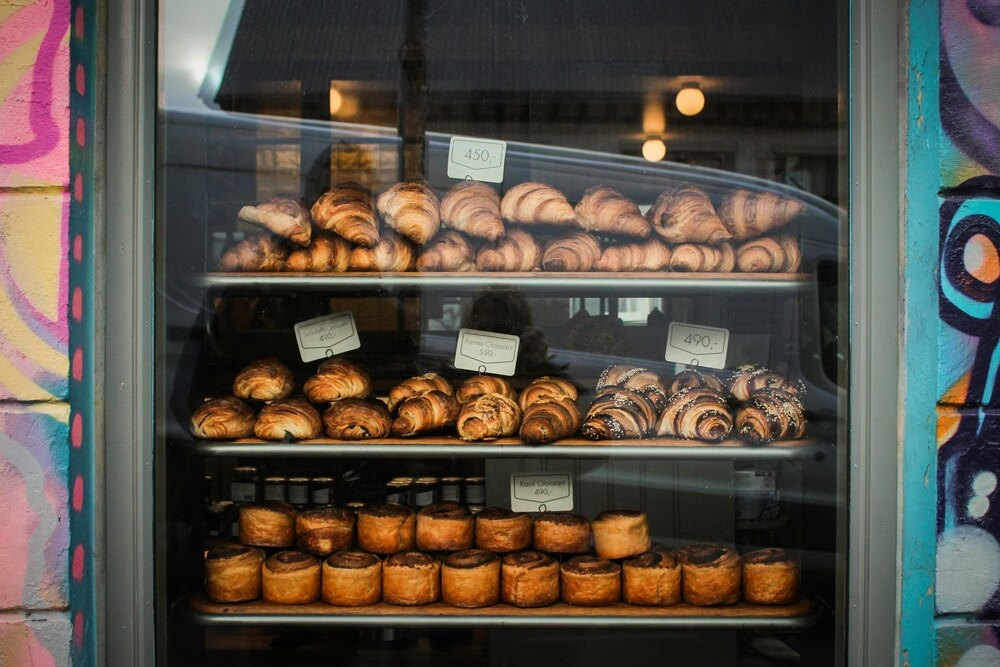

Ex Animo in Vancouver, B.C., has been in the pastry business for decades and makes top-quality pastry. Aaron Surman, Ex Animo’s co-owner and pastry chef, has managed both in-house and wholesale pastry programs. He believes a café should achieve at least a 50% margin on baked goods, receive delivery seven days a week for laminated pastries that spoil quickly, and always receive their pastries before their café opens.
Aaron mentions that Butterboom, the business he ran before Ex Animo, tried to reduce their delivery days to five per week, but it didn’t work as well for their clients’ success, so they went back to seven-day delivery. Wholesale bakeries face the same challenges you might encounter when bringing pastry in-house—mainly that finding people willing to work early mornings is a constant struggle, and it’s a skill-intensive job that takes time to learn.
Aaron emphasizes the importance of having outstanding pastries to boost pastry sales. The simple truth is that a top-quality croissant and a poor one are not that different in price when considering the cost of goods sold. However, technique, ingredient quality, and execution ultimately determine the final product. In a crowded market where many places serve good croissants, product quality becomes a crucial factor in driving sales. When you work with a pastry provider that aligns with your company’s mission, vision, and values, you can deliver a consistent brand message and build stronger trust with your guests.
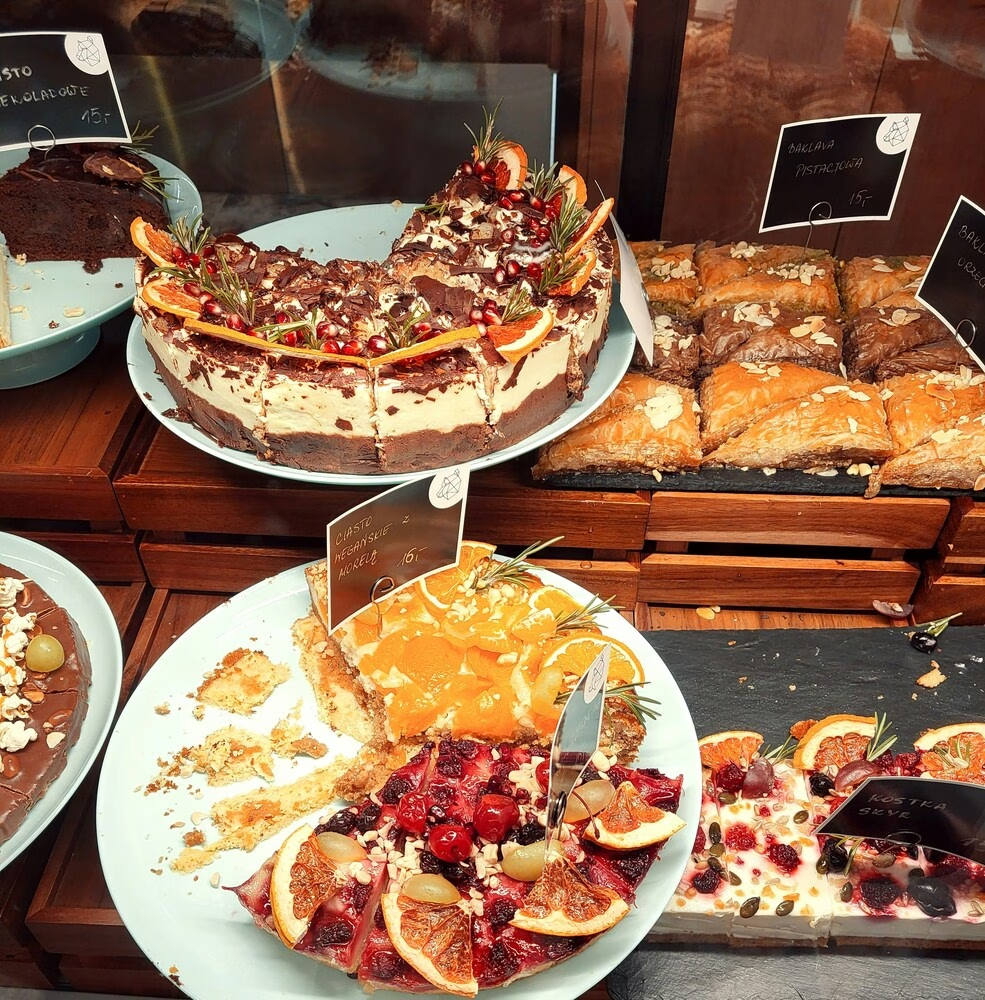


Business partnerships are a two-way street; so what makes a café a great partner for a bakery? Brett Fisher, general manager of wholesale and retail bakery Bread Craft in Roanoke, Va., emphasizes the importance of communication: about business needs, concerns regarding product, product sales, and potential areas for improvement. “You don’t want a client who is unhappy but never says anything to you,” Brett says, as it makes it difficult to work together to create a successful program that allows both parties to thrive.
Brett and Aaron both mention how hard it can be to get items delivered on time because of the tight deadlines. Everything is made by hand, and sometimes things go wrong—with proofing, production, or cooking processes. Brett says that, as with coffee, “there’s more that can go wrong in a bakery than ways to get it right.” Good communication between both parties can help prevent conflicts and allow each of them to succeed more by selling more products.
Support from your provider in managing waste is also crucial. Something Ex Animo does for their clients that I’ve never seen before is encouraging them to save day-old pastries by wrapping them in plastic wrap and freezing them for the week. They then cut those croissants and fill them with almond frangipane available from Ex Animo to make almond croissants. This kind of partnership toward mutual waste reduction and shared financial gain is exactly the type of communication that leads to success.
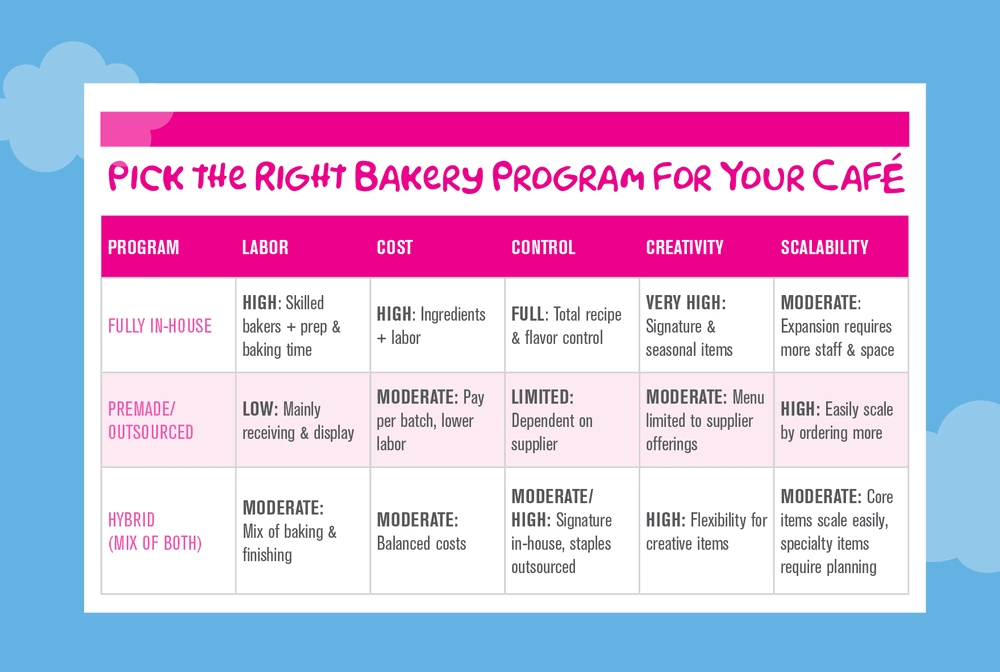


Hybrid Models
The next pastry option in the café is a sort of hybrid. It involves buying par-baked, frozen pastry that you can bake fully in your shop. There are benefits to this approach: You can better control freshness, reduce waste by baking only what you need, and it requires less equipment than a full bakery. All you really need is a freezer, a half-sheet pan, a convection oven like a Moffat Turbofan E22M3, and a cooling rack for pastries, and you’re ready to go.
The quality of providers for this type of offering can vary, just like when working with a wholesale bakery. Online foodservice retailers like Webstaurant and brick-and-mortar restaurant supply shops carry frozen par-baked items that you can bake in your own business. Or you can work with more boutique companies like Salmonberry Goods in the Seattle area that provide you with a variety of quality levels that you can match to your MVV.
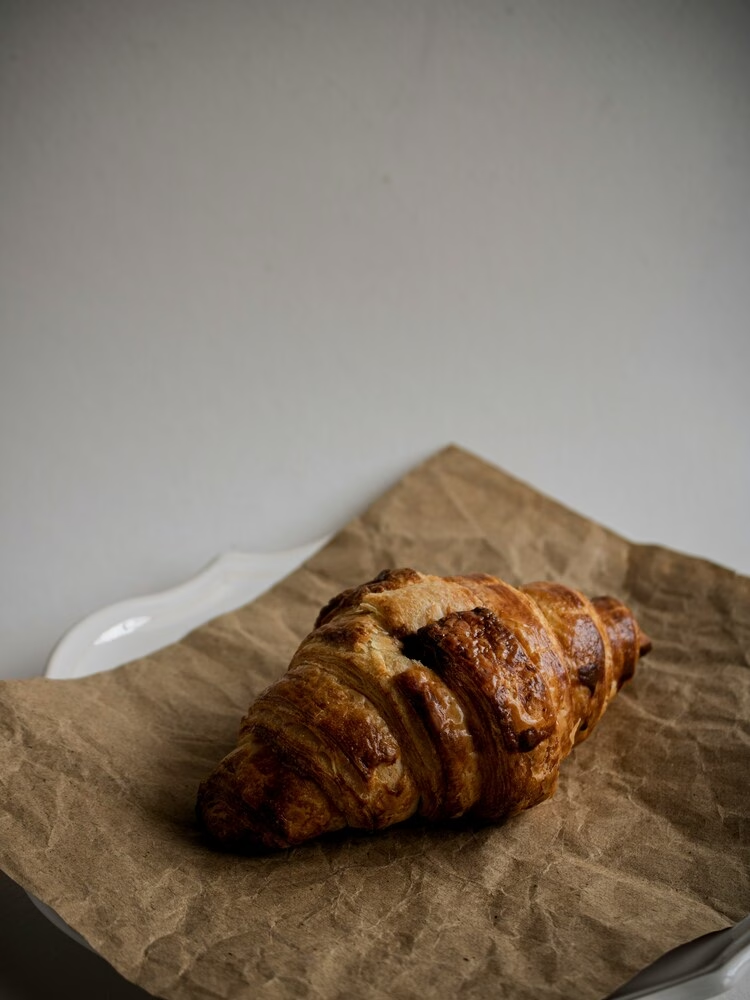


Another common situation is that businesses work with an outside provider for laminated pastries but make cookies, scones, biscuits, granola, and other less fussy items in-house. This approach usually requires more equipment than a par-baked model; you’ll need a stand mixer, more sheet pans, possibly more oven space, and additional ingredient storage. But it’s less equipment-intensive than a full laminated pastry program. This method can be an excellent way to test the waters for an in-house model and allows you to increase margins on some popular items while keeping more labor- and space-intensive products outsourced.
A hybrid model is what I used to launch my business, Narrative Coffee in Everett, Wash. We started working with Salmonberry Goods and baked their pastries in-house; we also made cookies, granola, and some vegan bars entirely in-house. Using this approach enabled us to meet guests’ expectations for a variety of products and gave us the flexibility to develop new items as we were ready. It also helped us secure great margins on top sellers: Our salted chocolate chip cookies quickly became one of our best-selling items in both units sold and profit margins (gross profit margin was over 90% on a single cookie). In 2019, we sold 7,414 cookies at $3.50 each, netting over $18,000 after accounting for cost of goods sold (CoGS) and labor.
Over time, we switched to a pastry provider that delivered pre-baked laminated pastries because we launched a food program that increased oven use. We faced some challenges finding bakeries that met our quality standards and could deliver at least five days a week, but eventually we found reliable partners. The current provider at Narrative (though I no longer own the company) is the excellent Cottage Bakery in Edmonds, Wash., and they do very good work.
In-House Models
The final model is the most involved but also provides the most control: bringing pastry fully in-house. Aaron strongly recommends this model if you can manage it because it offers unmatched freshness and typically generates more sales since the product is tastier, not to mention the baristas usually know more about the in-house product and tend to be more passionate about it.
There are a few essential items you’ll need to do pastry in-house: a refrigerator, a freezer, and a convection or deck oven. There are also some tools that will significantly improve your efficiency and batch sizes: for example, a good stand mixer—eight quarts is a good size to start with, but 20 quarts will be most useful for larger volumes. If you want to make laminated pastries, you’ll need a proofing cabinet. Additionally, you’ll find that a dough sheeter is a very helpful piece of equipment for laminated items, offering both consistency and efficiency. You’ll also need some sheet pans, molds, and a speed rack to cool items. This setup can work in a relatively small space, especially if you maximize cubic footage in addition to square footage.
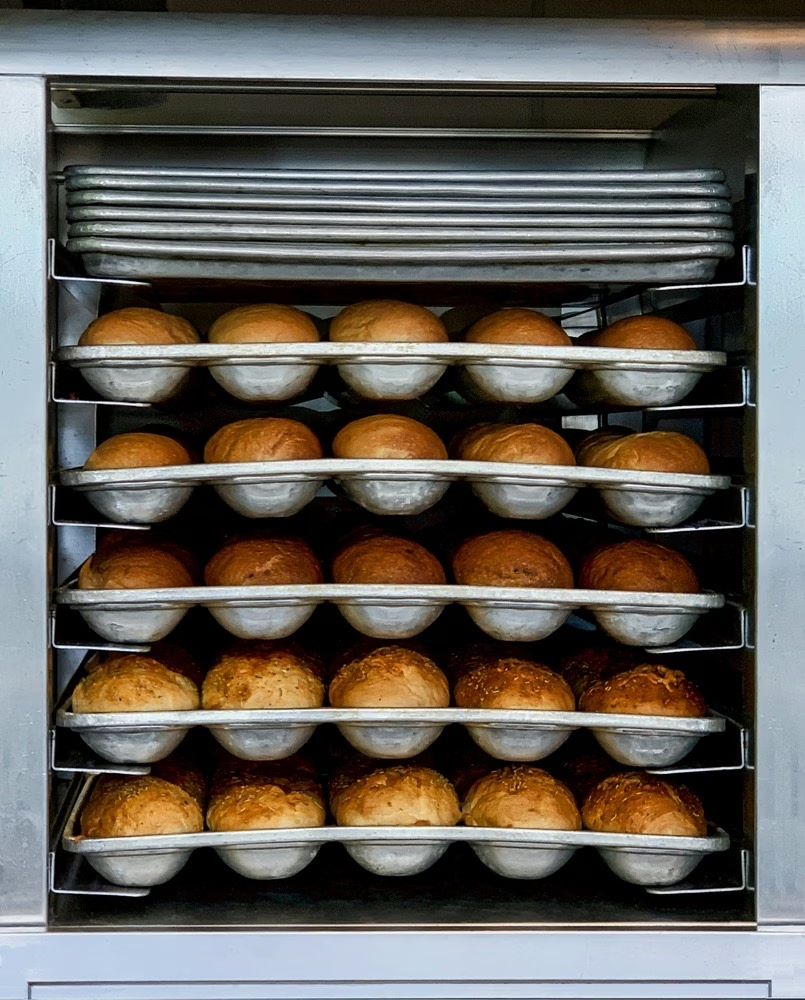


One company I’ve noticed bringing pastry production in-house over the years is Five Stones Coffee in Redmond, Wash. They initially relied on an outside provider called Bakehouse 55, but had to shift when Bakehouse 55 closed. They began making pastry in-house because one of their baristas, Aleah Donner, believed she could handle it. She had some experience, having attended culinary school, but no formal pastry training. She credits Five Stones owner Jacob Archer with being a supportive boss who encouraged her as she learned and experimented, and she emphasizes their shared commitment to improving daily as a key factor in their in-house program’s success.
They began by renting a small kitchen space from another business and adopted a hybrid approach, where they made non-laminated pastry in-house while sourcing laminated pastry from external providers. Eventually, Aleah took a class with renowned pastry chef Dominique Ansel and decided to start testing laminated pastry production in-house. She says these sweet treats were rough at first but became more consistent over time. She also credits an Estella Reversible Dough Sheeter with helping to boost quality and speed up production by improving croissant hydration and avoiding overworking the dough, which can cause excessive gluten development. Later, they moved into a larger rented kitchen before building their third café, which included a dedicated space for pastry production.
A common theme I noticed in the stories of Aaron, Brett, and Aleah is that creativity plays a crucial role in a successful pastry program. Aleah specifically recalls that during their learning process, they had to find ways to use less-than-ideal croissants. She explains that cruffins (a muffin-shaped croissant dough) and croffles (croissant dough pressed in a waffle iron) became essential solutions for imperfect batches, allowing the business to still sell these products. Being flexible as your team and business venture into new territory can help ease the transition into unfamiliar challenges.
But there’s another valuable lesson in that same story that I think is important: There was a quality standard that had to be met for the dough to be served as croissants. And when that threshold wasn’t reached, Aleah and the team refused to let the product go out. They found alternative uses for it that didn’t compromise their guests’ experience. This creativity and flexibility, combined with strong quality standards, creates excellence.
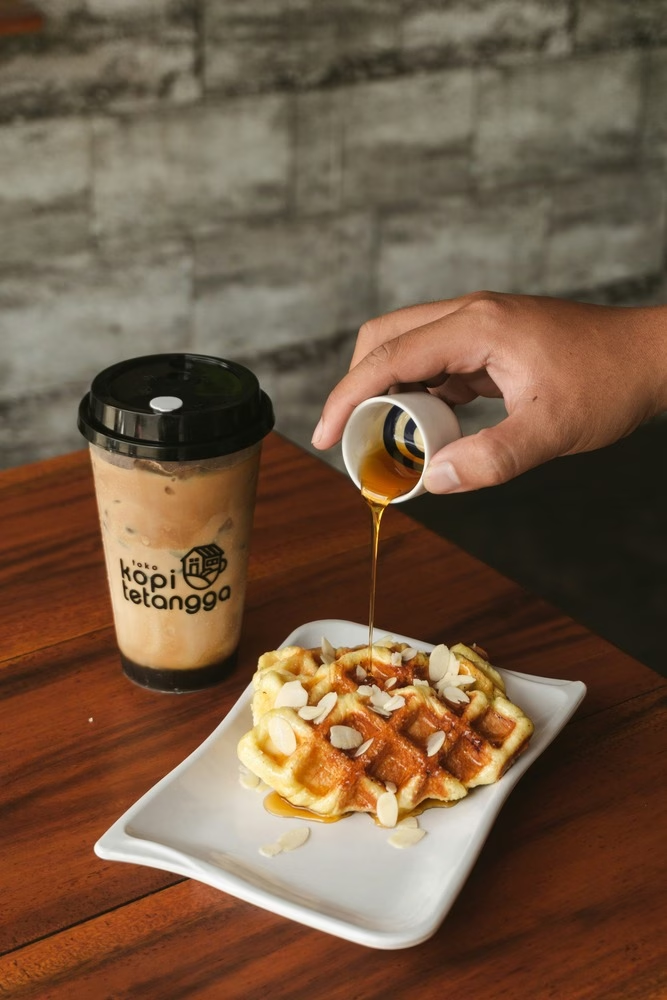


When you bring your pastry program in-house, aim for CoGS to be at least 15%, according to Aaron’s estimate. He notes that a souffle can cost less than $.50 but sell for $20 or more because of the difficulty of the technique and guest expectations. Clearly, coffee shops won’t be offering many souffles, but his point is that pastry can have much better CoGS than other parts of your business, like retail items or even food.
But what if, like Five Stones owner Jacob Archer, you want to bring pastry in-house but lack the skills or interest to lead that team yourself? Well, according to all our sources, the qualities that make a great leader of a pastry program are more character-based than necessarily competence-based at first. This is a process that can be developed gradually. Aaron recommends starting small, with an intentionally limited menu of a few sweet items and only one savory option, and building demand gradually rather than trying to fully stock a pastry case and losing money daily on waste. Our sources agree that output matters more than title or resume, per se. The proof, as they say, is in the pudding. Or, for all my coffee folk, cup don’t lie.
Now, of course, if you want to launch a rippin’ pastry program straight off the jump, you’ll need to hire someone to lead a team or bring in a great consultant to help with what you don’t know and to train your team. But if you’re OK with starting slow, focusing on self-motivated, detail-oriented, and passionate people is a way to ensure you’ll have team members who can grow into their roles as the program expands. Someone could start as a barista and gradually take on more baking hours as the program develops, eventually moving on to fully managing the baking operations.
So, what to do about pastry?
Well, it depends. Which of the three models described gets you closest to fulfilling your mission, vision, and values? Ultimately, the answer to that is the most important. It should influence whether you need to get creative by renting a commissary kitchen for baking because your café is too small, or if it makes sense to bring in par-baked pastries from an outside provider simply to offer your guests a fresh yet budget-friendly option.
My hope is that you now have enough information to get started. I’ll be looking for the croissant crumbs to see which path you chose.



Bake, Buy, or Both?
Every café is unique, and your bakery program can significantly impact customer experience, kitchen workflow, and profitability. From fully in-house baking to sourcing premade pastries—or a mix of both—there’s a model to suit every type of café owner. Here’s a quick guide to help you decide which approach fits your space, staff, and vision.
1: Fully In-House Baking
Description:
All pastries are prepared from scratch on-site, giving cafés full ownership of recipes, flavor profiles, and presentation. From laminated doughs and sweet rolls to tarts and specialty items, everything is crafted in-house to meet the café’s specific standards.
Best for:
- Café owners who want complete control over quality, flavor, and menu creativity, allowing them to craft signature or artisanal offerings.
- Shops with sufficient space, commercial-grade baking equipment, and trained staff to manage prep, baking, and plating.
- Cafés aiming to differentiate themselves in the market, building a reputation for unique, handcrafted pastries that complement their beverage program.
Considerations:
- Higher labor and ingredient costs, as skilled bakers and premium ingredients are often required.
- Consistency and scheduling can be challenging; maintaining quality during busy periods or across multiple shifts requires careful planning.
- Strong operational oversight is necessary to avoid waste and ensure efficiency.
2: Fully Outsourced (Premade Pastries from a Local Bakery)
Description:
Cafés purchase ready-to-serve pastries from a local bakery, which can include fresh-baked items delivered daily or partially baked products that require minimal finishing on-site. This model reduces in-house production demands and focuses on convenience and consistency.
Best for:
- Café owners who want to focus on coffee and beverage service rather than bakery operations.
- Small cafés or shops with limited kitchen space or staffing, where in-house baking isn’t feasible.
- Cafés prioritizing efficiency, speed, and consistency, ensuring that customers receive reliable, high-quality pastries without daily production effort.
Considerations:
- Less control over recipes, flavor, or seasonal creativity, as offerings are dictated by the bakery.
- Dependence on the bakery’s schedule, quality standards, and reliability can impact menu consistency.
- Limited ability to adjust offerings in response to customer feedback or trends.
3: Hybrid Program (Mix of In-House & Premade)
Description:
A hybrid approach combines in-house baking of signature or seasonal items with premade pastries sourced from a local bakery. Some items may be partially baked by the bakery and finished on-site, allowing cafés to offer a balance of creativity and efficiency.
Best for:
- Café owners who want some control and creativity but need the operational efficiency of premade items for high-volume or standard offerings.
- Shops with moderate staff and limited kitchen space that still want to highlight unique or seasonal pastries.
- Cafés experimenting with specialty offerings or rotating menu items while keeping core products consistent and dependable.
Considerations:
- Requires careful inventory management and workflow coordination to ensure both in-house and outsourced items are available and fresh.
- Scheduling can be more complex, as staff must balance baking, finishing, and stocking premade products.
- Offers a middle ground in cost, labor, and control, but success depends on clear operational planning and supplier reliability.
This article originally appeared in the October + November 2025 issue of Barista Magazine. Read more of the issue online here for free.
ABOUT THE AUTHOR
Maxwell Mooney (he/him) is a barista turned business owner turned consultant with Threadbare Coffee Consulting who helps people build coffee businesses that take great care of people. His focus is on helping startups build sustainable brands and helping single-unit businesses scale to multi-unit businesses using his decade-plus experience to help people craft meaningful businesses. He’s competed nationally in many United States Barista Championships, has won dozens of latte art competitions, opened an award-winning coffee shop in 2017, and, most importantly, has had the chance to work with amazing baristas over the years. He also somehow has become known for his spreadsheets (despite not being very good at making them).
Subscribe and More!
As always, you can read Barista Magazine in paper by subscribing or ordering an issue.
Read the October + November 2025 Issue for free with our digital edition.
For free access to more than five years’ worth of issues, visit our digital edition archives here.
Source: Barista Magazine



